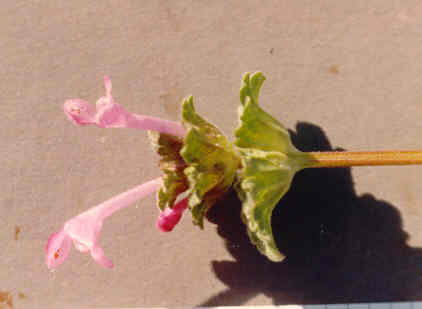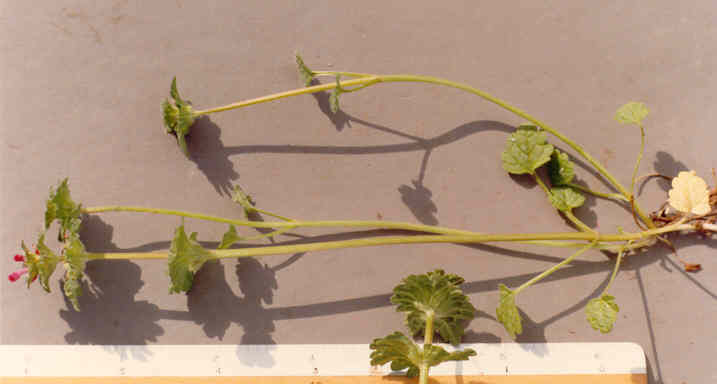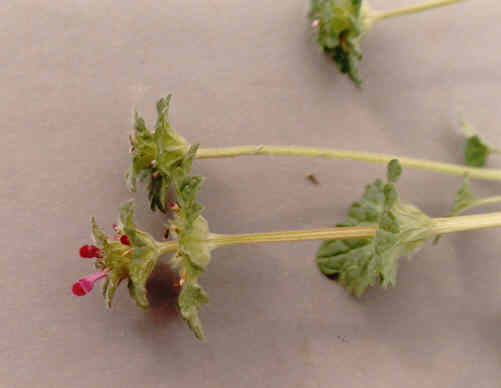
Lamium amplexicaule L.
 |
Lamium amplexicaule L.
Lamiaceae (Mint Family)EuropeDead Nettle MintCommon Henbit |
March Photo
Plant Characteristics:
Mostly annual, sparsely pubescent, the stems branched from the base, +/-
decumbent, 1-4 dm. long; lvs. broadly ovate to roundish, truncate or cordate at
base, coarsely crenate, the lower petioled, the upper not, 2-2.5 cm. wide; fls.
few, in axillary and terminal clusters; calyx pubescent, ca. 4-5 mm. long, the
teeth erect; corolla purple red, 12-16 mm. long, the tube glabrous inside, upper
lip pubescent; the nutlets are sharply 3-angled, grayish-brown in color,
speckled with silvery-gray granules.
Habitat:
In waste places below 4500 ft., occasionally natur., especially
northward. April-Sept.
Name:
Greek, laimos, throat, because
of the gaping corolla. (Munz, Flora So. Calif. 525). Latin,
amplexus, encircling.
(Jaeger 16). Amplex,
encircling and caulis, stem,
suggesting that the leaf bases encircle or clasp the stem.
(John Johnson). They are entitled to the strangely favorable label
"dead" because in this case it distinguishes them from the
"true" or stinging nettle whose leaves their own resemble.
(Hatfield 75).
General:
Rare in the study area, first in the Santa Ana heights flats in an area
that is now developed to housing. Found
in 1998 in upper Big Canyon near Jamboree Rd.
(my comments).
May be boiled alone or with other ingredients and eaten.
A tincture of L. album
leaves and flowers has been used upon the female generative organs to cause
inflammatory excitement. (Coon
233). Although
it is an annual, it can be found flowering almost throughout the year. In mild
winters it continues to flaunt its rose-colored blooms that are mainly for show
and do nothing to propagate the species. It
has other flowers however, inconspicuous ones that do not open but
self-pollinate the seeds that nestle safely inside. So henbit does not rely on bees or any other insect, but
instead gets along very well without them.
Its average seed production per plant reaches about a thousand, but only
a few offspring survive. Henbit is
not gregarious and never appears in abundant masses. (Hatfield 76).
About 40 spp. of the Old World. (Munz,
Flora So. Calif. 525
Text Ref:
Abrams, Vol. III 630; Hickman, Ed. 714; Munz, Flora
So. Calif. 525; Roberts 27.
Photo Ref:
Feb 1 85 # 8,9,24A.
Identity: by R. De Ruff,
confirmed by F. Roberts.
First Found: February 1985.
Computer Ref: Plant Data 68.
Have plant specimen.
Last edit 12/26/04.
 |
 |
February Photo February Photo